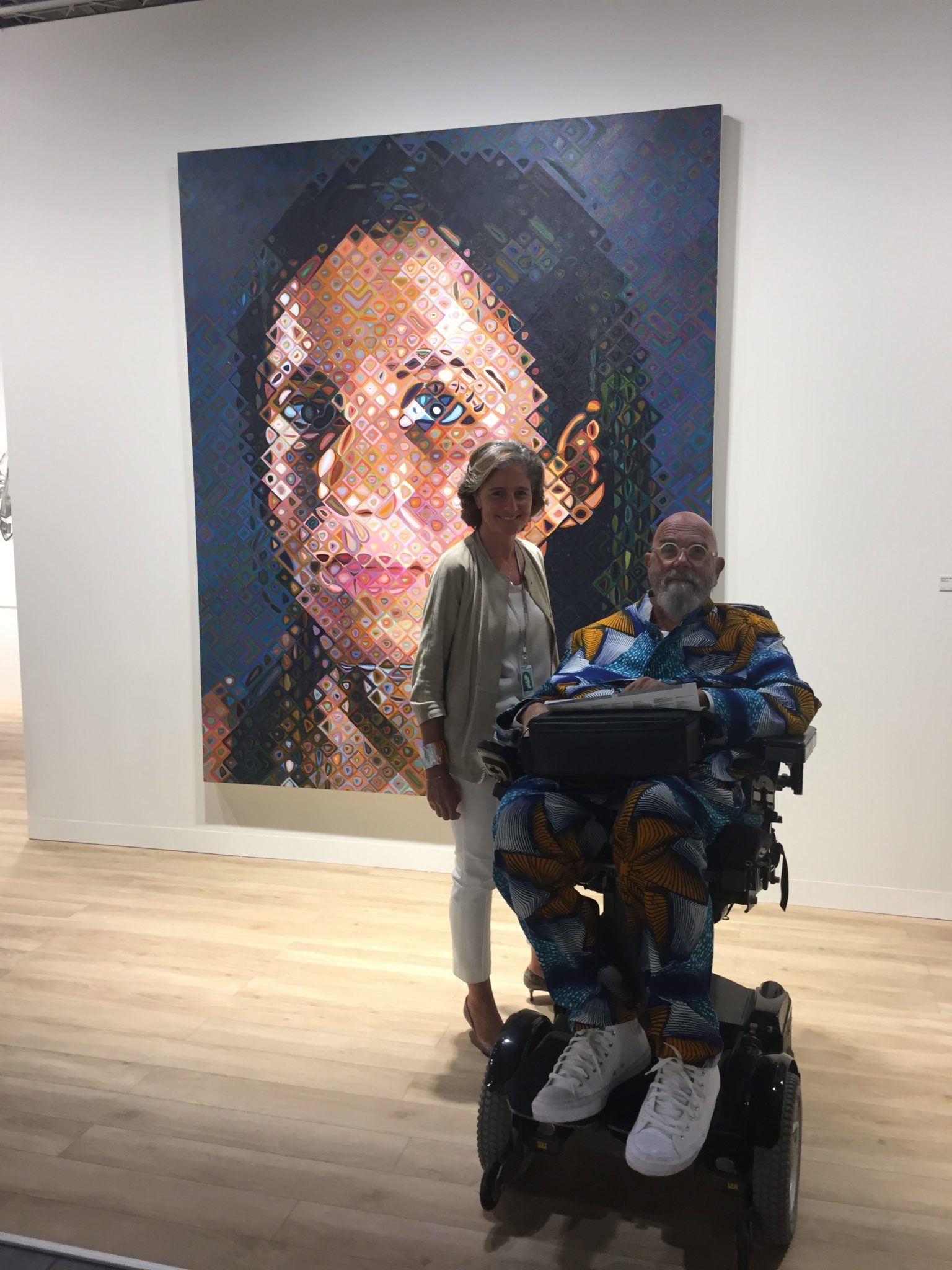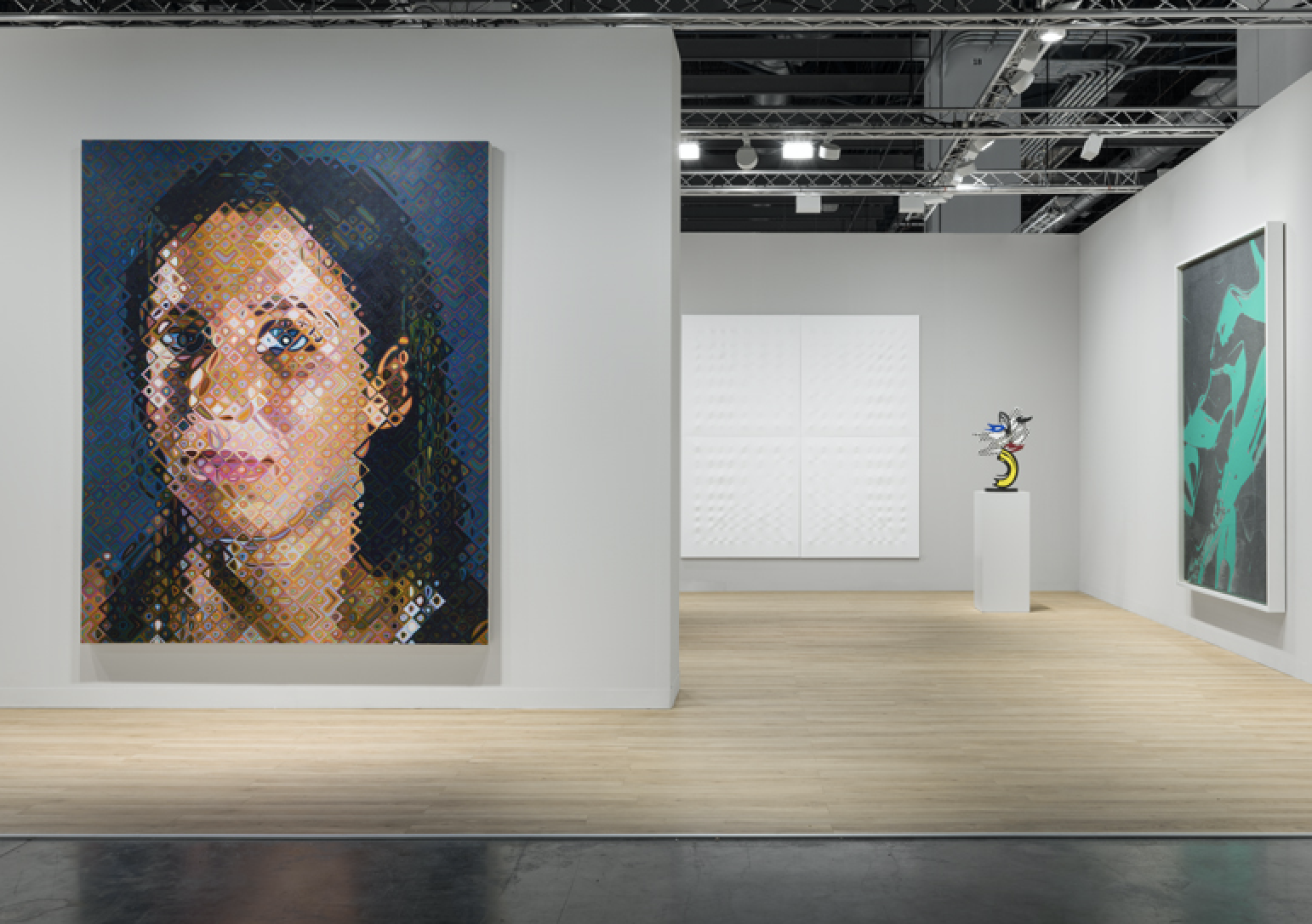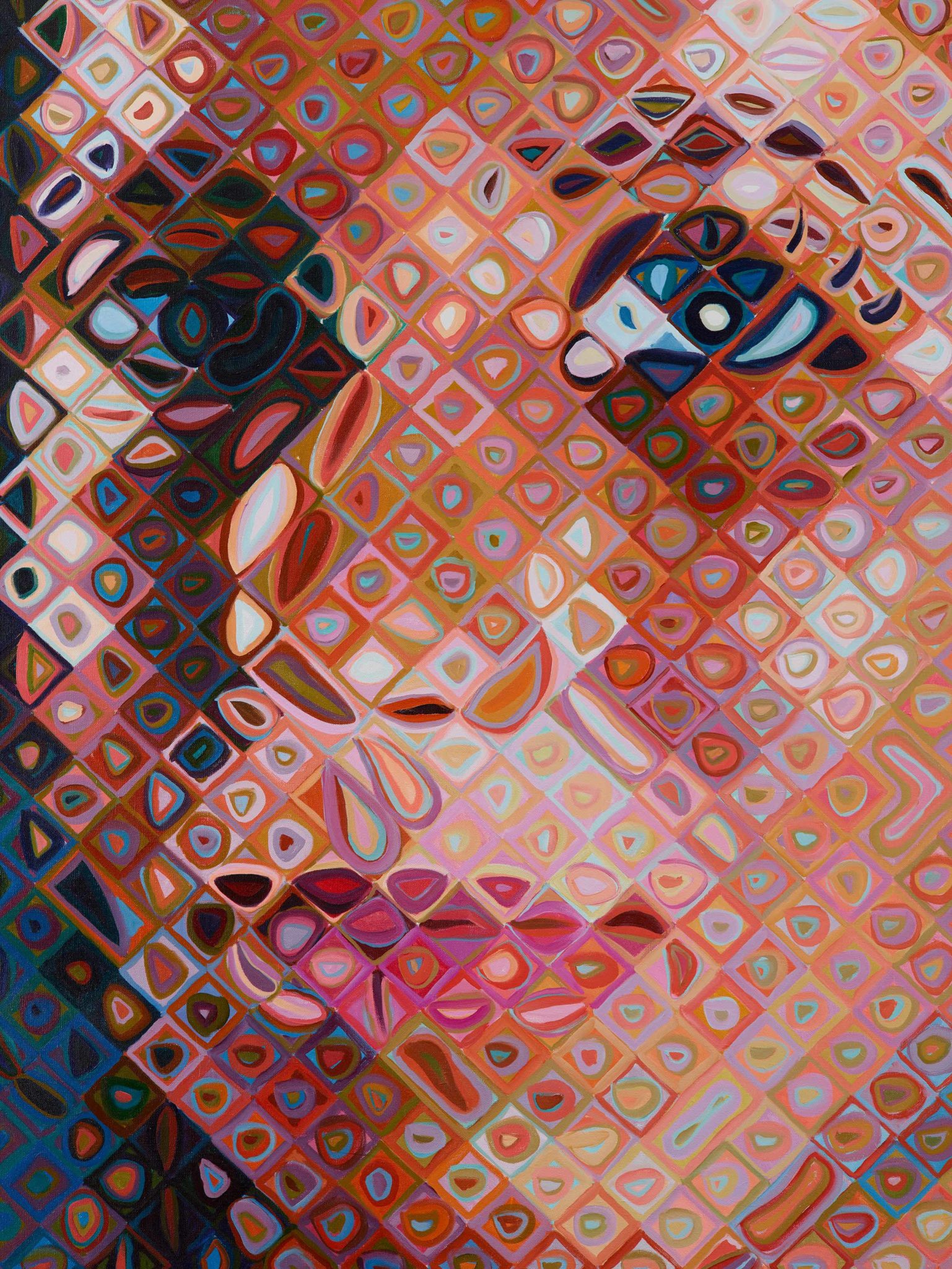Art Basel Miami Beach Spotlight: Chuck Close
Art Basel Miami Beach 2017 kicked off on December 6! During preview day, gallery co-founder Dominique Lévy welcomed Chuck Close in front of his work, Maggie, on view in our presentation at booth (E6).
Enjoy this spotlight on Maggie (2005-2006).
—
I chafe under the term realist; the work is, I suppose, about reality, but it’s also highly artificial. It’s the artificiality which really interests me, the fact that it’s the distribution of colored dirt on a flat surface.
— Chuck Close, interview with Lisa Yuskavage, BOMB No. 52 (Summer 1995)
Working through a predetermined system designed to transfer a photographic image onto the space of the canvas with meticulous tonal exactitude, Chuck Close began his mature career in the late 1960s with the same basic technical approach to painting with which he engages today. The compositional parts-to-whole relationship is a concern that has preoccupied the artist since the 1960s, when he established himself as a leader among the new group of artists emerging from the Yale School of Art. Close’s pictures most often take an I.D. photo format: the head faces forward, with the subject’s shoulders against an ambient or blank ground, subjected to the focal variations inherent to photographic images. His virtuosic draughtsmanship and use of monumental scale manifests a perceptual gestalt despite—or perhaps precisely because of—the cumbersome features of the format, investigation of both empirically-realist images relayed in photographic syntax and modern social documentation, Close’s portraits stage an intimate examination of the tension inherent to relaying individual likeness through a standardized formal configuration.
Close favored a broader chromatic range and looser brushstroke as his career progressed. The slick, airbrushed surfaces disclosing the epidermal details of his subjects, however unflattering they may be, gave way to the patterned, mosaic network that comprised his work of the 1980s. In the same decade, Close returned to oils after years of acrylic, graphite, and ink. His imagery began to eschew the overtly self-reflexive reference to the photographic medium in favor of a more direct experiment with the process of cognition and identity. After recovering from a collapsed vein that ultimately paralyzed him from the neck down, Close returned to painting in the late 1980s with a new sense of freedom. He developed a looser style defined by a complex, vivid palette and microcosmic blocks of painterly fluidity that never fail to coalesce into an authentic schema of recognizable features.
The present work, Maggie (2005–06), depicts Close’s youngest daughter. The sitter’s relative anonymity is a holdover from previous decades, when the artist consistently chose friends, family, or arbitrary strangers as subjects. This tendency began to shift, however, in the late 1980s and early 90s, when Close began portraying more high-profile individuals. This image was painted alongside Close’s portraits of several eminent public figures, including former American President Bill Clinton and actor Brad Pitt. Maggie’s expression differs from the passport-style poses for which Close is most well-known. She gazes affectionately up and to the right, her lips pursed into a warm smile, evoking a playfulness unseen in Close’s previous portrayals of her. Produced as his daughter was on the cusp of young adulthood—she appears to be somewhat younger than 21 in the painting— one wonders if the portrait provided a nostalgic escape for the artist: Maggie would have been in her early 20s when the image was created, but her likeness appears to place her in a chronology closer to earlier oil-on-canvas renditions, painted when the sitter was 12 and 14. Such an anachronism compliments the dichotomy between facture and fracture that has prevailed throughout the artist’s career, implicating the ubiquitous yet highly individual experience of reconciling one’s personal memory with the present reality—a process that is especially poignant when a parent comes to terms with the conclusion of a son or daughter’s childhood.
More stories
Lévy Gorvy Announces Mickalene Thomas: Beyond the Pleasure Principle
New York | London | Paris | Hong KongJun 3, 2021
PALM BEACH GALLERY HOP & CARPENTER VIOLIN TRIO
Palm BeachMar 6, 2021
Donate Clothing in celebration of Pistoletto's Rebirth Day in New York
New YorkDec 21, 2020
Lévy Gorvy updates its Chinese name to
"厉蔚阁" with appointment of Rebecca Wei in Asia
Hong Kong
Dec 15, 2020
In Conversation | Dominique Lévy & Loa Haagen Pictet
Dec 5, 2020
Pierre Soulages on CBS Sunday Morning
Nov 8, 2020
Rebecca Wei Named Founding Partner of Lévy Gorvy Asia
Sep 24, 2020
LÉVY GORVY TO OPEN A PARIS GALLERY SPACE
Jul 2, 2020



















